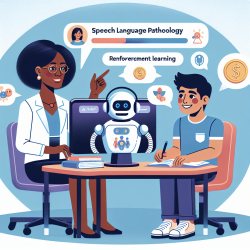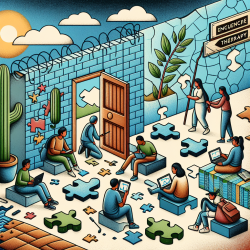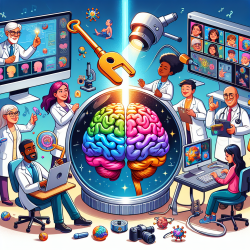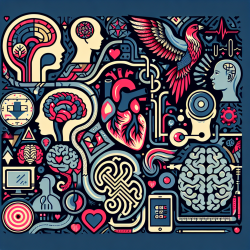The integration of social robotics into educational settings is an exciting frontier, particularly in the realm of online therapy services. A recent review article, "Reinforcement Learning Approaches in Social Robotics" by Akalin et al. (2021), provides valuable insights into how reinforcement learning (RL) can be utilized to enhance human-robot interactions (HRI). This blog aims to distill key findings from this research and suggest practical applications for practitioners working with children in schools.
Understanding Reinforcement Learning in Social Robotics
Reinforcement learning is a machine learning paradigm where an agent learns to make decisions by receiving rewards or penalties based on its actions. In social robotics, RL can help robots adapt to diverse human behaviors and preferences through trial-and-error interactions. The reviewed article categorizes RL approaches based on the type of RL used, communication mediums for reward formulation, and the nature of the reward function.
Key Findings and Practical Applications
The review identifies several key themes and approaches that can be directly applied to improve online therapy services:
1. Interactive Reinforcement Learning (IRL)
IRL involves humans providing feedback to guide the robot's learning process. This feedback can be explicit, such as through a graphical user interface (GUI), or implicit, like emotional responses and gestures. For online therapy services, therapists can use IRL to train social robots to recognize and respond to children's emotions and behaviors more effectively.
2. Intrinsically Motivated Methods
These methods rely on the robot's internal motivations to drive learning, similar to human curiosity. By incorporating intrinsic motivations, social robots can engage in more natural and autonomous interactions with children, making therapy sessions more engaging and effective.
3. Task Performance-Driven Methods
These methods focus on optimizing the robot's performance in specific tasks, such as educational activities or therapeutic exercises. By using task performance as a reward signal, social robots can be tailored to meet the unique needs of each child, thereby improving the outcomes of therapy sessions.
Implementing RL in Online Therapy Services
To integrate these RL approaches into your online therapy services, consider the following steps:
- Identify Key Interaction Metrics: Determine which child behaviors and responses are most important for your therapy goals.
- Develop Reward Mechanisms: Create reward systems that align with these metrics, whether they are explicit feedback from therapists or implicit emotional cues from children.
- Train Social Robots: Use IRL to continuously improve the robot's responses based on real-time feedback during therapy sessions.
- Monitor and Adjust: Regularly evaluate the robot's performance and make necessary adjustments to the RL algorithms to ensure optimal outcomes.
Encouraging Further Research
While the current research provides a solid foundation, there is ample room for further exploration. Practitioners are encouraged to engage in research to refine these RL methods and explore new applications in educational and therapeutic settings.
Conclusion
The integration of reinforcement learning in social robotics offers promising advancements for online therapy services. By leveraging IRL, intrinsic motivations, and task performance-driven methods, practitioners can enhance the effectiveness of therapy sessions, leading to better outcomes for children.To read the original research paper, please follow this link:
Reinforcement Learning Approaches in Social Robotics.










